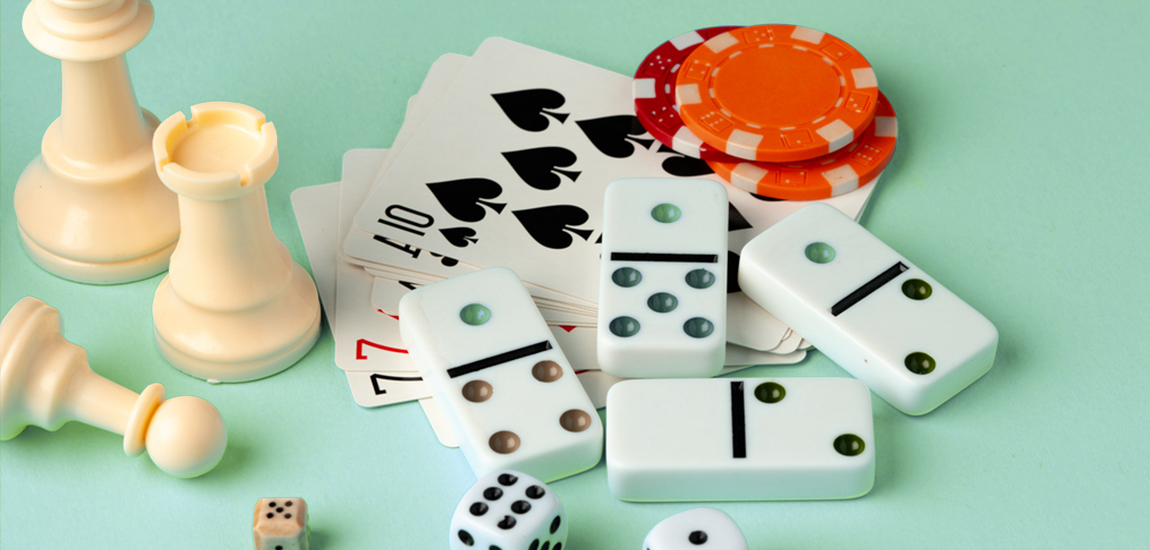Board games have always been a source of fun and creativity. However, beyond the gameboard and dice, an interesting legal question arises: Can these games be protected by copyright? Even though the mechanics of a game cannot be protected, both the game as a whole and its creative elements are copyrightable. The key lies in the originality and the manner in which they are expressed.
From classic board games such as ludo and checkers, to Party or Monopoly, board games are not only essential during childhood they also form part of our culture and how we relate to our family and friends. Who has never shouted “I roll because it’s my turn”? Who has never successfully answered a question “for a wedge”? Who has never seen their ship “sunk” during a game of Battleship?
Many of these games include highly creative cards and drawings, or very complex rules and mechanics, which are the result of an evident intellectual effort by their creators. The question therefore is: Can board games be protected by copyright?
Let’s put the cards on the table: from the Copyright Law and case law that interprets it can be inferred, that, generally speaking, the mechanics of a game do not meet the requirements to be protected as an intellectual property work. This conclusion ties in with the general criterion that ideas are the basis or underlying element of a work, which means that ideas alone lack sufficient creative expression and as a result are not eligible for protection.
This is why the Intellectual Property Registry cautions that games cannot be registered as works, and mentions them together with other types of ideas: “systems, projects, ideas, techniques, methods, concepts, procedures to do, make or build things, scientific or technical methods or discoveries, mathematical principles, formulas, algorithms or any work concept, process or method.”
Must we therefore assume that even if we expend all our creative effort on a board game that recreates a totally original world of fantasy, with an incredibly pictorial and artistic game board, with instructions worthy of the greatest literary consideration, with characters that could have come out of a Tolkien novel, that it cannot be protected? Fortunately, this is not the case, as copyright has dealt us a couple of aces that we still have up our sleeve.
Firstly, it seems clear that any element that is included in a board game and meets the originality criterion, constitutes a literary or artistic work, depending on its nature. For example, the instruction manual setting out the rules of a game, expressed in a specific manner, constitutes a literary work, comparable to a brochure or written document. Drawings, designs, figures or characters can be classified as artistic works.
This same criterion is also applicable in other countries: the US Copyright Office precisely specifies that “[T]he idea for a game is not protected by copyright[…]. Some parts of a game may be subject to copyright if they contain a sufficient amount of literary or pictorial expression. For example, you may be able to register the text describing the rules of the game or the graphic art appearing on the gameboard or container.”
Similarly, in principle, there is nothing to stop a board game from being protected as a whole by copyright, beyond its isolated elements, provided that:
- It has concreteness of expression, that is, it is not a mere idea but rather embodied in a specific medium or format.
- It is original, in the sense that it reflects the free and creative decisions of its author, or, as with complex works, authors.
The most authoritative doctrine appears to hold this position. Bércovitz considers that although the ideas that govern games and contests cannot be copyrighted, they can naturally secure protection “when they are disseminated through a medium or format that constitutes an original creation” (Bércovitz Rodríguez-Cano, Rodrigo (Coord.): Comentarios a la Ley de Propiedad Intelectual, Ed. Tecnos, 2017 (Comentario al art. 10. III. Creaciones literarias, artísticas, científicas, p. 167, nota 46) (“Comments on the Intellectual Property Law (Comments on article 10.III, Literary, artistic, scientific creations)”
The Spanish courts have also ruled along these lines. In relation to a questions and answers game called Saber y Jugar Club de Fútbol, the court ruled that it constituted an original creation and clarified that “for those purposes it makes no difference whether the data were known or new. The relevant aspect is the original form and the personal way in which it was explained by the author.”
Another example of a game that was considered copyrightable is the famous “rosco” or final round of the program Pasapalabra. According to the Supreme Court, the creators of the “rosco” expressed their creative freedom in the game and this creativity was embodied in a series of audiovisual works (the various programs of the contest).
Indeed, in those cases in which games or elements of games have been refused protection, it was precisely because they did not meet the basic requirements for a human creation to be considered a work. This is because it was merely an idea that was not appropriately embodied on any medium and/or because it was not an original creation:
- El juego de la oca case: In this case the court held that this game, consisting of numbering copies of certain newspapers or magazines with the aim of promoting them and holding a draw in which the holder of the winning number won a prize, was not sufficiently original to be protected by copyright. This makes sense, because the aim was to protect the actual idea or mechanics of the game and not the original manifestation of that idea on a particular medium.
In fact, the argument used to claim that the game was original held that the fact that the traditional -and not at all novel- raffle was applied to the field of editorial promotion was different enough to be original. However, this argument is unsubstantiated because the purpose of an idea does not make it original: the relevant aspect is that it must be an intellectual creation embodied on a medium that reflects the author’s personality and that it is the result of their free, creative decisions.
- Pleno al cero case: the court held that the game consisting of awarding prizes to participants that did not have any correct answers in the football pools was neither novel, nor original. Once again, in this case the aim was not to protect an original creation expressed on a medium, but rather only the idea or functioning of the game.
In short, the application of the principles established in the Copyright Law to the nature of board games means that it may be concluded that both board games and the elements of which they are comprised may be eligible for protection. However, as is almost always the case with the copyright game board, the key element is originality.
Ángela López






